2010 Sea-Doo RXT-X 260 Review
Something borrowed, a whole lot new
Hit the button to activate “sport mode” on the newly retooled 2010 Sea-Doo RXT-X and a message scrolls across the information display. I don’t remember the exact words, but the gist of it is this: Tell your passengers to hang on…and hang on tight.
Why? Because sport mode takes advantage of the possibilities that come with electronic throttle, one of several new additions to Sea-Doo’s flagship muscle machine. Curious? Read on.
Grading On A Curve
Sea-Doo introduced electronic throttle last year on the GTX Limited iS and RXT iS. At the time, items like cruise control and no-wake modes seemed to make best use of the technology that replaces a physical cable linkage between throttle lever and engine with a data-carrying wire. But as Sea-Doo reps readily admit, those items are just the tip of the iceberg. What’s more fun is recalibrating that actual acceleration curve to match a rider’s needs.
Start the RXT-X and its supercharged/intercooled 1,494cc engine fires up in “touring mode,” which features a gentler acceleration curve that should appeal to a more mainstream audience. Prefer to get busy and you can opt instead for the aforementioned “sport mode.” That same throttle now takes on a more aggressive personality, following a much steeper curve that results in some of the hardest hitting acceleration I’ve ever felt in a production watercraft. Last year’s RXT-X reached 30 mph in as little as 1.7 seconds. Although I have yet to definitively measure acceleration on the 2010 version, my gut instinct is that it may be even faster.
That same electronic tinkering is credited with the RXT-X engine’s new 260hp designation. It’s no coincidence that’s the number Kawasaki touts on its Ultra 260X. Sea-Doo’s a competitive company. I’m betting that the number is also inflated slightly, as Sea-Doo has a tendency to do. In reality, last year’s 255 designation was much closer to 233 according to the EPA. But whatever the number, it’s strong. The RXT-X has always been one of the single hardest accelerating machines on the market, and that claim to fame is only reinforced with this newest take on the venerable Sea-Doo 4-TEC engine.
Top speed? It should be electronically limited by the craft’s GPS-based speedometer to 67 mph. Evidently my test boat was set to European standards, as it easily recorded 70 mph against a handheld GPS. Sea-Doo is even claiming that calibration of the throttle has allowed them to save fuel in 2010, contending that models now offer as much as 50% better fuel economy at 30 mph cruise speeds.
What The Hull?
In the overall scheme of things, however, those changes may be small. One of the biggest changes for the 2010 RXT-X is the adoption of the stepped hull introduced on last year’s suspension models. Mated to an equally new stationary top deck that bears a strong resemblance to those aforementioned models when in their lowered position, it gives the RXT-X a new look on the water and what may even be a more aggressive personality.
The previous RXT-X was hard to beat in this regard. Still, I noted the stepped hull had potential on last year’s models. Absent the suspended topside of those craft, and without the suspension’s weight and bulk, the RXT-X reveals its personality as a surefooted, incredibly agile, lean-in style handler. On the calm waters of the Potomac River during Sea-Doo’s press introduction, I railed the machine through an imaginary slalom course with nothing less than total precision. While the river lacked any truly big water, I’d suggest that rough water handling is also improved compared to earlier models.
Previous “X” models had an almost bare bones, race-like appearance about the handlebars by design. For 2010, a much more beefy assembly takes its place, but offers an expanded range of modification. With the help of a common Allen wrench, riders can fine-tune the handlebars overall width, change the actual angle of the grips, as well as choose the level of tilt. The info display also receives welcome upgrades. In addition to a new clock, a distance-till-empty fuel consumption display is standard. X packages also add an altitude display and lap timer.
In Control
With all this talk about electronic innovation you might expect that the RXT-X receives one additional element of Sea-Doo’s iControl package. Intelligent Braking and Reverse now comes to the RXT-X, enabling users to stop in nearly half the distance required by previous generation models by deploying the aft-mounted reverse/brake bucket. The computer controls the force, briefly chopping thrust while the bucket drops, then quickly resuming the pressure to rapidly slow the craft. It’s never so abrupt as to threaten to eject a rider over the handlebars, but instead is quite easily controlled by the user, who can apply more or less stopping power by how hard they squeeze the lever, conveniently mounted on the left handgrip.
The technology is even more usable on an everyday basis around the dock and launch ramp, as it allows the boat to start in a stationary, neutral mode, and then be shifted into forward or reverse much like a traditional boat. Hands never leave the handlebars along the way, and eyes are free to remain focused on the water. It’s one of the most practical, most useful features I’ve seen added to a PWC in 30 years of involvement with the sport.
There’s plenty more, of course. Sea-Doo’s variable trim system carries over, notable for its ability to offer two pre-set positions that a rider can reach with just a quick double-tap of the button. Again, eyes remain focused on the water, not a button or gauge. The hinged, pneumatically-assisted seat of last year’s iS models also finds its way onto the craft, as does the massive 52 gallons of storage space. Off-throttle steering assistance kicks in under collision avoidance situations; thrust is increased to the pump in conjunction with a rapid release of the throttle and abrupt turn of the handlebars. You’ll also continue to get Sea-Doo’s dual lanyards; one acts as a speed governor, and both serve as theft-prevention solutions.
| 2010 Sea-Doo RXT-X 260 Specs | |
| Length | 139.0 inches |
| Beam | 48.0 inches |
| Dry Weight | 855 lbs |
| Engine | Three-cylinder EFI, Supercharged/Intercooled |
| Displacement | 1,494 cc |
| Bore and Stroke | 100mm x 63.4mm |
| Compression Ratio | 8.4:1 |
| Rated Horsepower | 260 |
| Fuel Capacity | 15.9 gal. |
| Combined Stowage Capacity | 52 gal. |
| Colors | Black |
| Price | $14,199 |
Related Reading
2010 Sea-Doo Lineup Preview
2008 Sea-Doo RXT-X Review
2009 Sea-Doo RXT iS 255 Review
Get PersonalWatercraft.com in your Inbox!
Like PersonalWatercraft.com on Facebook
Comments
Most Popular

Remembering the Sea-Doo XP

2025 Yamaha JetBlaster PRO 2-Up Review

2024 Yamaha GP HO Review

2024 Kawasaki Jet Ski STX 160X Review

2008 Kawasaki Jet Ski Ultra 250X Review
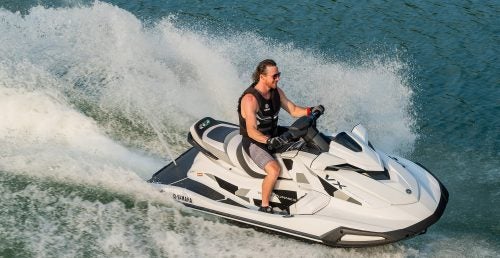



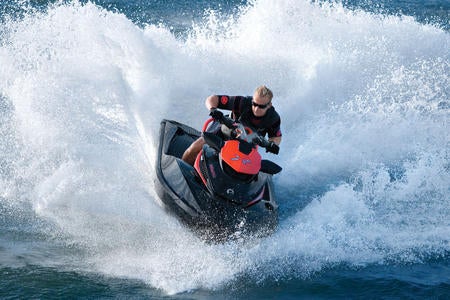
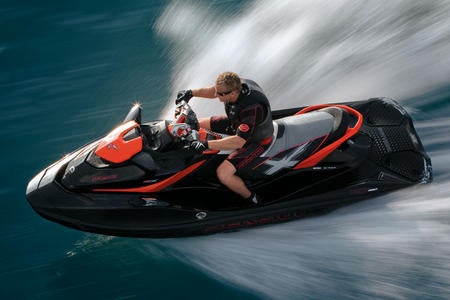
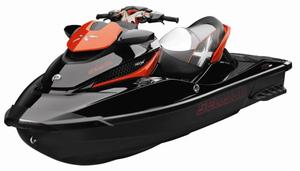
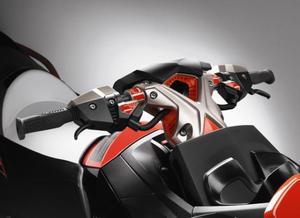
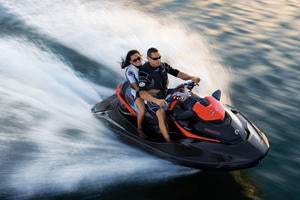
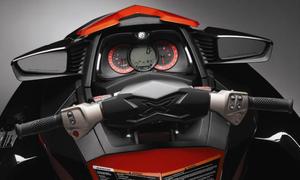







 Your Privacy Choices
Your Privacy Choices